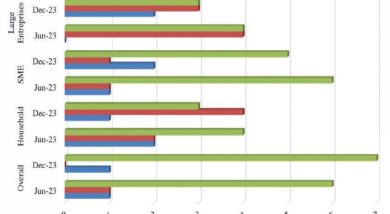MRA moves to improve efficiency
 Public tax collector Malawi Revenue Authority (MRA) says it is seriously pursuing connectivity at local, regional and international levels to enhance some of the body’s key functions such as facilitation of legitimate trade and collection and accounting for trade taxes.
Public tax collector Malawi Revenue Authority (MRA) says it is seriously pursuing connectivity at local, regional and international levels to enhance some of the body’s key functions such as facilitation of legitimate trade and collection and accounting for trade taxes.MRA commissioner of customs and excise Shadreck Namalomba said this on Thursday in Malawi’s commercial city, Blantyre, at the official commemoration of the International Customs Day under the theme ‘Borders Divide, Customs Connect’.
Other functions that will be supported by this connectivity drive, according to Namalomba, include protection of society from prohibited and restricted goods, counteracting fraud and tax evasion and collection of trade statistics. He said this year’s theme has been devoted to promoting the concept of connectivity.
MRA has lined up a number of initiatives to drum up the connectivity drive.
“We intend to establish a centralised entry processing area at the headquarters that will cater for import and export submissions from all automated stations. From February 1 2012, declarations lodged at the border or inland stations will be electronically transmitted to a central point in head office, the declaration processing centre (DPC), for documentary verification and processing before release,†explained Namalomba, adding that with the DPC, the revenue collector will improve efficiency in the processing of customs declaration resulting in faster clearance times.
At the same time, he said, importers will be accorded uniform professional customs treatment across the country because all declarations will be handled under one roof.
Namalomba said the customs and excise division will also introduce the remote direct trader input (RDTI) to provide customs clearing agents and importers a chance to assume full responsibility of keying in customs declaration details into the Automated Systems Customs Data (Asycuda).
“We are going to install the Asycuda software in computers of all legible clearing agents to enable them enter declaration data and communicate with customs through the use of the Asycuda system. Instead of having to queue up at Data Trader Input (DTI) bureaus at the border stations or ports as is the case now, clearing agents will have the chance to input declarations into the Asycuda at their own pace from the comfort of their offices,†he said.
The new service is set to minimise errors and result in faster clearance of goods as declaration input will be done from a number of points compared to a single bureau at the customs premises, he said.
MRA also plans to roll out electronic tax payment system which would allow importers to pay customs duty at any branch of a bank connected to the Asycuda instead of paying directly to banks within the revenue collector’s premises.
Namalomba also revealed that MRA is exploring the possibility of establishing connectivity with the Road Traffic Directorate (RTD) and police on vehicle clearance and registration as one way of curbing the problems of smuggled vehicles.
He said once the vehicle has been registered at the point of entry, automatically, the RTD will have all particulars of the vehicle.
He said these connectivity initiatives are being pursued as part of the customs reform strategy to modernise customs operations and achieve complete automation of customs services.




